In the article Linear vs. Binary Search, there is a fast implementation of binary search which uses the CMOV instruction. I would like to implement this in VC++ as the application I'm working on relies on the performance of Binary Search.
The implementation has some GCC inline assembler which is declared as follows:
static int binary_cmov (const int *arr, int n, int key) {
int min = 0, max = n;
while (min < max) {
int middle = (min + max) >> 1;
asm ("cmpl %3, %2\n\tcmovg %4, %0\n\tcmovle %5, %1"
: "+r" (min),
"+r" (max)
: "r" (key), "g" (arr [middle]),
"g" (middle + 1), "g" (middle));
// Equivalent to
// if (key > arr [middle])
// min = middle + 1;
// else
// max = middle;
}
return min;
}
I'd like to convert this GCC Assembler to Microsoft Visual Studio compatible assembler, but as a GCC noob wouldn't know where to start.
Can anyone help, or at least explain the GCC Inline Assembler? TIA!
